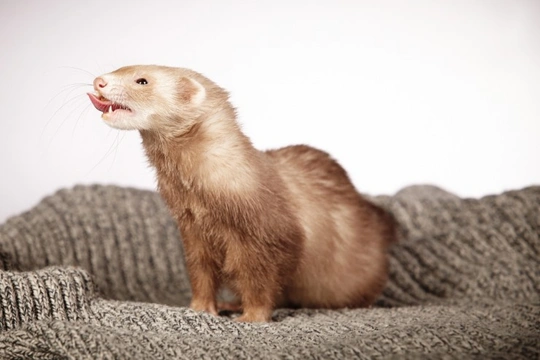
What colours and patterns can ferrets be found in?
While pet ferrets do not enjoy the same levels of popularity as more common pets such as cats and dogs, they are still a common pet with a strong following of enthusiasts that keep them and promote ferret care and welfare. There are lots of different ferret clubs and organisations in the UK, as well as those dedicated to rescue and rehoming ferrets, and professional bodies that organise shows too, so it is fair to say that there is quite a lot out there for those that are enthusiastic about ferrets!
To the uninitiated or new ferret enthusiast, all ferrets might look much the same-but when you get to know ferrets a little better, you will soon learn that they can be found in a wide range of different colour and pattern combinations, some of which are in great demand and considered to be very desirable to own.
In this article, we will look at the various different colour and pattern variations that can be seen in pet ferrets, as well as the correct terms used to describe them so that you will be able to explain exactly what you’re looking at! Read on to learn more.
Colours
If you think that ferrets all come in a fairly genetic beige-y shade of “ferret beige,” think again! Ferrets can actually display a wide range of different shades, which when combined with patterning and different markings make up quite a variety!
The colours that domestic ferrets can be seen in (and the terms used to describe them) are as follows.
Sable
The sable coat colour is the shade that people are generally referring to when they talk about beige or sandy-coloured ferrets, and this is in fact the most common ferret colour overall. The sable colour is actually a combination of different coloured hairs, with the lower layer of the coat being cream or pale coloured, topped off with black or brown guard hairs, or top hairs.
Sable also usually comes accompanied by a mask of darker colour around the face.
Black sable
A black-sable ferret shares the same colour combination of light and dark as the standard sable, but their guard hairs are so dense and dark that the undercoat will not be visible unless you deliberately part the fur.
Albino
Albinism isn’t as uncommon in ferrets as it is in most other species, and albino is not so much a colour in and of itself but an absence of colour-this appearance arises when the ferret does not have any colour pigmentation in their skin, leading to a coat that is pure white and eyes that appear either red or pink.
White
A white ferret is not the same as an albino ferret, because they are not missing the pigmentation that leads to colour, and they do not have pink or red eyes. The white colour may not be pure white and can range from snow white to light cream, and some white ferrets will have the odd darker hair in their coats too!
Silver
Silver ferrets come in a wide range of shades, from a very light, pearlescent grey to a dark steel shade, and silver can be seen on its own on the tail only in some ferrets too. They tend to have the same shade of colour all across the body, with little to no markings such as a mask or colour points.
Brown
Ferrets that are brown are sometimes referred to as chocolate coloured, and they have a rich, deep mahogany coat that may appear to have a soft sheen to it, usually accompanied by a cream or gold undercoat.
Champagne
Sometimes simply grouped in with brown or chocolate ferrets, the champagne colour has the same brown base as chocolate, with lighter coloured guard hairs to give them a paler shade.
Roan
A roan coloured coat is actually the combination of two different shades, which are distributed in an even mixture throughout the coat. This colour mixing leads to a distinctive shade all of its own that can vary depending on the colours involved, but if you look more closely, you will be able to see the colours of the individual hairs!
Red or cinnamon
The most unusual shade for ferrets to display is red or cinnamon, comprised of a light brown coat with a lot of red pigmentation. They are striking to look at, and often have lighter fur on their tail, underbelly and legs.
Patterns
As well as the base colours described above, ferrets can also be seen in a range of different patterns as well, each of which are described with their own technical terms!
- Colour points describe a ferrets whose legs and tail show a different colour to the body.
- “Solid” means a ferrets whose coat appears to be all the one shade.
- A mask refers to darker markings around the eyes.
- “Mitts” means white paws, like mittens!
- A blaze is a white stripe down the face.



